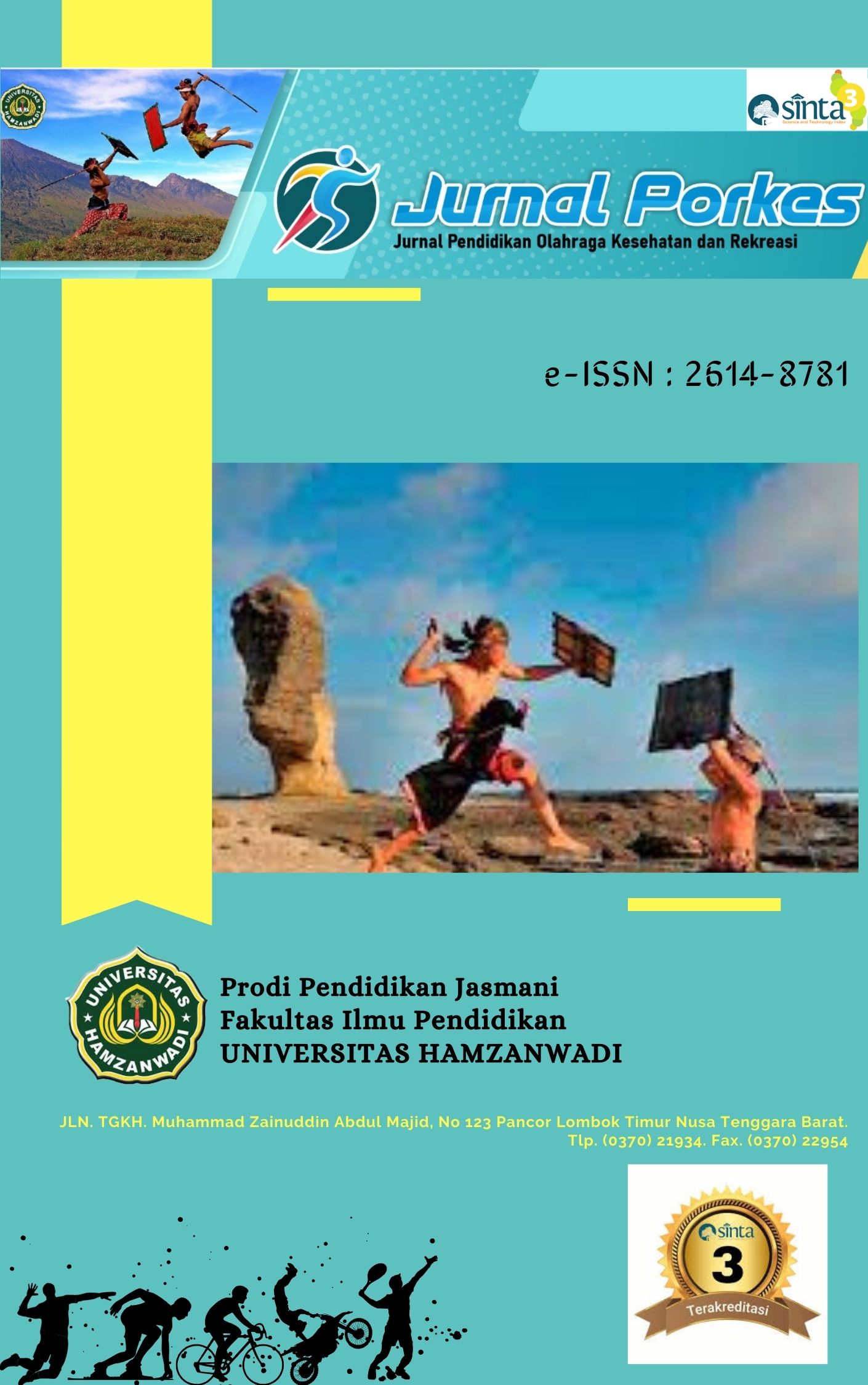Adaptasi Muskuloskeletal Atlet Asli NTT: Perspektif Biomekanik
DOI:
https://doi.org/10.29408/porkes.v8i1.29951Keywords:
Sports biomechanic; musculoskeletal adaptation; NTT athletes.Abstract
This study aims to examine the musculoskeletal adaptations of indigenous athletes from East Nusa Tenggara (NTT) from a biomechanical perspective. NTT athletes exhibit unique biomechanical characteristics influenced by environmental factors and habitual physical activity from an early age. This study employs a quantitative approach using experimental biomechanics analysis. The research subjects consist of local NTT athletes compared to national athletes in various biomechanical parameters, including bone mineral density (BMD) and ground reaction force (GRF). The results indicate that NTT athletes have higher BMD, particularly in the tibia and femur, demonstrating structural adaptations to repetitive mechanical loading. Additionally, the vertical GRF of NTT athletes is lower during the landing phase, suggesting a more efficient biomechanical strategy for impact absorption. These adaptations contribute to enhanced performance and physical endurance. This study provides new insights into sports biomechanics and can be utilized to design more tailored training programs for athletes in similar regions.
References
Abdillah, M. Z., Septiaji, W. D., & Romdhoni, W. (2024). Litarature Review : Basic Biomechanics Litarature Review : Basic Biomechanics. Journal Human Resource Strengthening, 1(1), 82–89. https://journalhrs.com/index.php/JHRS/article/view/29
Caldwell, G. E., & Kram, R. (2019). Mechanics and energetics of locomotion in elite endurance runner. Journal of Experimental Biology, 222(5), 101–109.
Folland, J. P., & Williams, A. G. (2013). Morphological and physiological determinants of human muscle strength. Sports Medicine Journal, 37(2), 145–168. https://link.springer.com/article/10.2165/00007256-200737020-00004
Lavin, K. M., Coen, P. M., Baptista, L. C., Bell, M. B., Devin, P. drum, Harper, S. A., Lixandrão, M. E., McAdam, J. S., O’Bryan, S. M., Ramos, S., Roberts, L. M., Vega, R. B., Goodpaster, B. H., Bamman, M. M., & Buford, T. W. (2022). The study of musculoskeletal adaptation has grown rapidly in the last two decades, with particular attention to ethnic groups or communities exposed to extreme physical activity in daily life. Comprehensive Physiology Journal, 12(2), 345–362. https://doi.org/10.1002/j.2040-4603.2022.tb00211.x
Leonard, W. R., Snodgrass, J. J., & Sorensen, M. V. (2005). Metabolic Adaptation In Indigenous Siberian Populations. Annual Reviews Journal, 34(1), 451–471. https://doi.org/10.1146/annurev.anthro.34.081804.120558
Lieberman, D. E. (2015). Human locomotion and heat loss: an Evolutionary Perspective. National Library of Medicine Journal, 5(1), 99–117. https://doi.org/10.1002/cphy.c140011
Liphardt, A. M., Niess, A. M., & Schütz, U. H. (2021). Biomechanics and Performance Analysis in Elite Sports: Current Trends and Future Directions. European Journal of Sport Science, 21(4), 555–567.
Moore, I. S. (2016). Is There an Economical Running Technique? A Review of Modifiable Biomechanical Factors Affecting Running Economy. Sports Medicine (Auckland, N.Z.), 46(6), 793–807. https://doi.org/10.1007/s40279-016-0474-4
Robling, A. G., Castillo, A. B., & Turner, C. H. (2006). Biomechanical and Molecular Regulation of Bone Remodeling. National Library of Medicine Journal, 455(98), 145–155. https://doi.org/10.1146/annurev.bioeng.8.061505.095721
Ryan, T. M., Shaw, C. N., & Stock, J. T. (2018). Bone Functional Adaptation and its Relationship to Mobility and Activity Patterns in Humans. American Journal of Physical Anthropology, 165(4), 635–651.
Scholz, M. N., D’Août, K., & Aerts, P. (2020). Foot Structure and Function in Habitual Barefoot Populations: Implications for Sports Performance. Journal of Sports Sciences, 38(3), 345–359.
Tanaka, H., Morishita, S., & Yamamoto, Y. (2021). Biomechanics of Sports Movements in Southeast Asian athletes. Asian Journal of Sports Science, 12(3), 265–279.
Warden, S. J., Hurst, J. A., Sanders, M. S., Turner, C. H., Burr, D. B., & Li, J. (2005). Bone Adaptation to a Mechanical Loading Program Significantly Increases Skeletal Fatigue Resistance. Journal of Bone and Mineral Research, 20(5), 809–816. https://doi.org/10.1359/JBMR.041222
Wolff, J. (1893). Das Gesetz der Transformation der Knochen. Dtsch Med Wochenschr, 19(47), 1222–1224. https://www.thieme-connect.com/products/ejournals/abstract/10.1055/s-0028-1144106
Downloads
Published
How to Cite
Issue
Section
License
Copyright (c) 2025 Michael Johannes Hadiwijaya Louk, Salmon Runesi, Andy Widhiya Bayu Utomo, Fera Ratna Dewi Siagian, Erwin Sarnoto Neolaka

This work is licensed under a Creative Commons Attribution-ShareAlike 4.0 International License.
![]()
Jurnal Porkes is licensed under a Creative Commons Attribution-Share Alike 4.0 International License







